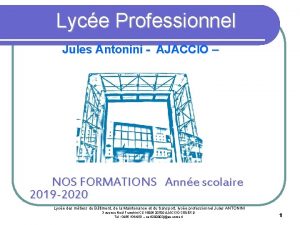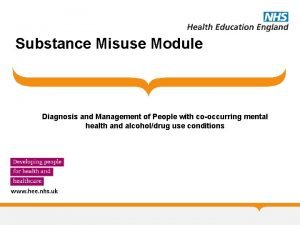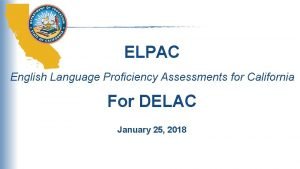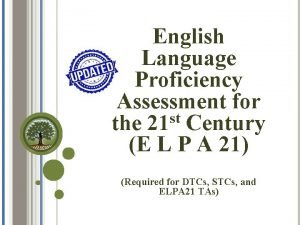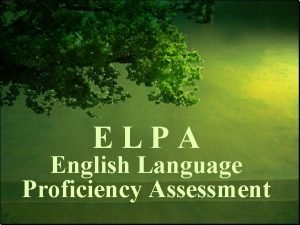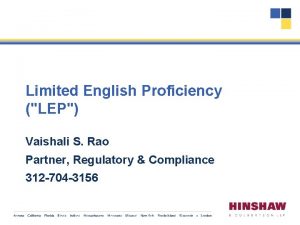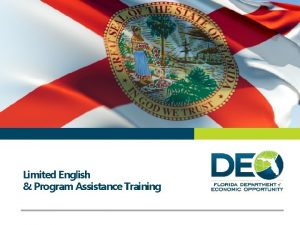Limited English Proficiency LEP Populations for Portland Factor



















- Slides: 19

Limited English Proficiency (LEP) Populations for Portland: “Factor 1” Analysis Uma Krishnan Demographer, BPS, City of Portland

Limited English Proficiency (LEP) Population Who are the “LEP”? Individuals whose primary language is not English and have a limited ability to read, write, speak, or understand English Why is it important to know who they are? Language can be barrier to accessing important benefits/ services; exercising important rights; complying with applicable responsibilities |2

Determining Limited English Proficiency (LEP) Populations “Four-factor” analysis (Executive Order 13166, Dept. of Justice) provides guidance on accessing LEP: Ø Factor 1: The number or proportion of LEP persons eligible to be served by a program, activity or service; Ø Factor 2: The frequency with which LEP individuals come in contact with the program; Ø Factor 3: Importance of service/information/program/activity; Ø Factor 4: Costs vs. Resources and benefits |3

“Factor 1” Analysis What is “Factor 1 Analysis”? & What is a “safe harbor” provision? Ø The analysis involves assessing the “number” or “percent” of people over 5 years who speak English “not well” or “not at all”; important is the language each group speaks; Ø The analysis leads to a list of LEP languages; Ø The safe harbor defined as “five percent or 1, 000 individuals” is the criterion used in compiling the LEP language list; |4

Data sources for City of Portland’s “Factor 1” Analysis: Ø American Community Survey: 2008 -2012; Ø U. S. Census, “Detailed languages spoken at home and ability to speak English for the population 5 years and over: 2006 -2008; Ø Oregon Department of Education (ODE): 2012 -2013 School Enrollment data; |5

Key Findings § The population over 5 years is 550, 368 and make up 94% of the total City’s population. § 103, 441 persons over the age of 5 years or 18. 8% of the City of Portland population, speaks a language other than English at home. § 48, 176 persons over the age of 5 speak a language other than English at home and speak English less than “very well”. This population is 8. 8% of Portland’s over-5 population. § Spanish is the second most predominant language followed by Vietnamese in the third place. § Nine non-native English language groups with the City of Portland’s service area have LEP population of 1, 000 persons or more. |6

LEP languages list for Portland |7

|8

|9

| 10

| 11

| 12

| 13

| 14

| 15

| 16

| 17

| 18

Questions for the group: Ø Should Laotian with the maximum possible value of 977 people be considered a LEP language? Ø How to focus attention on the Karen and Chukese communities? Ø How to raise awareness of “lesser known” languages? | 19
 Biela vrana frazeologizmus
Biela vrana frazeologizmus Clarence valley lep
Clarence valley lep Lep
Lep Jules antonini
Jules antonini Lep sidney
Lep sidney Eclass ucc
Eclass ucc Ciwa b
Ciwa b South east midlands lep
South east midlands lep Lep l
Lep l Tomi lep
Tomi lep Levels of language proficiency
Levels of language proficiency Language
Language Elpac score descriptors
Elpac score descriptors Telpas alt rubric
Telpas alt rubric English language proficiency assessment (elpa)
English language proficiency assessment (elpa) Steps to english proficiency
Steps to english proficiency Review and assessment siop
Review and assessment siop Language english proficiency
Language english proficiency Texas english language proficiency standards
Texas english language proficiency standards Elpa practice
Elpa practice



